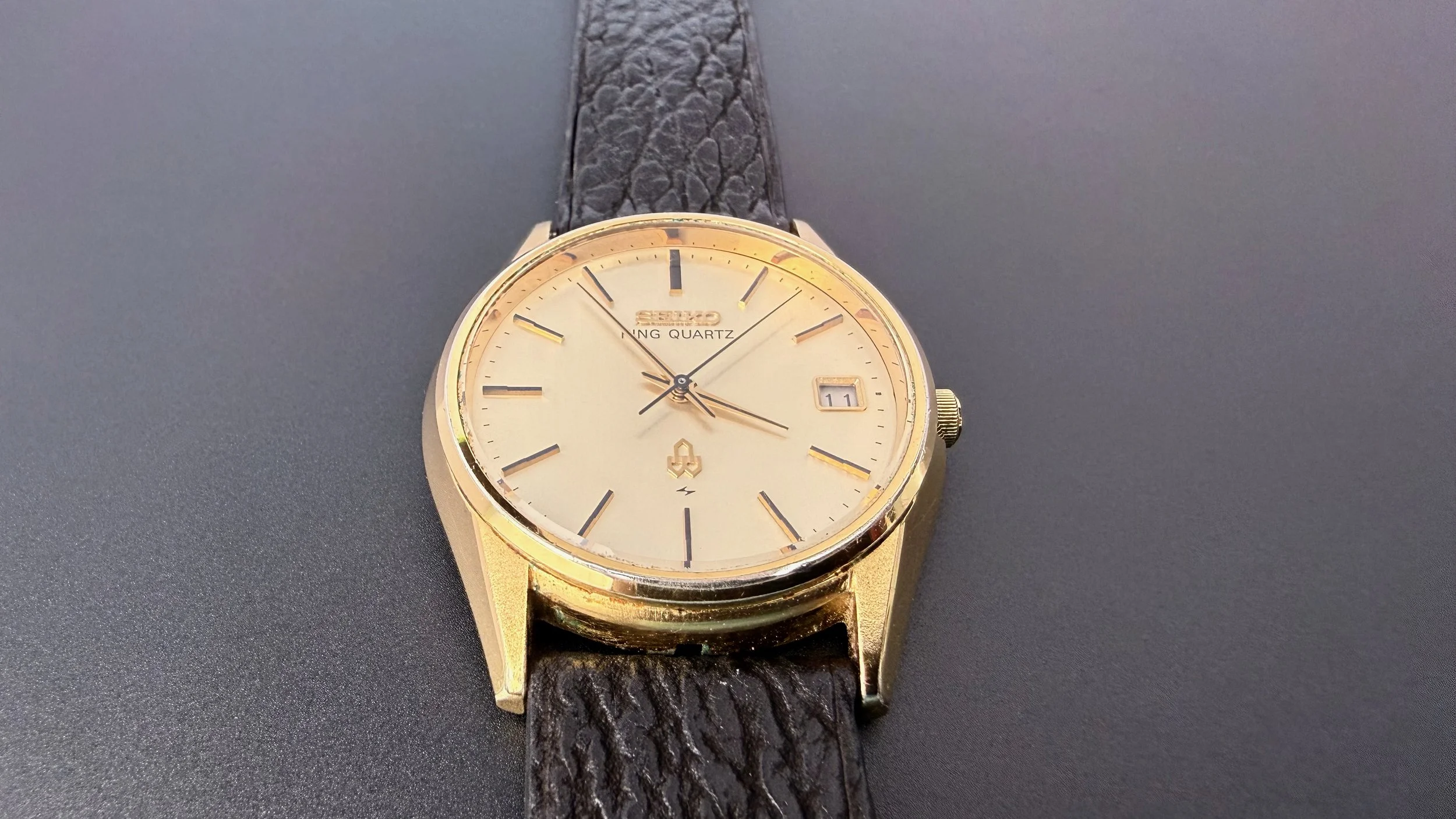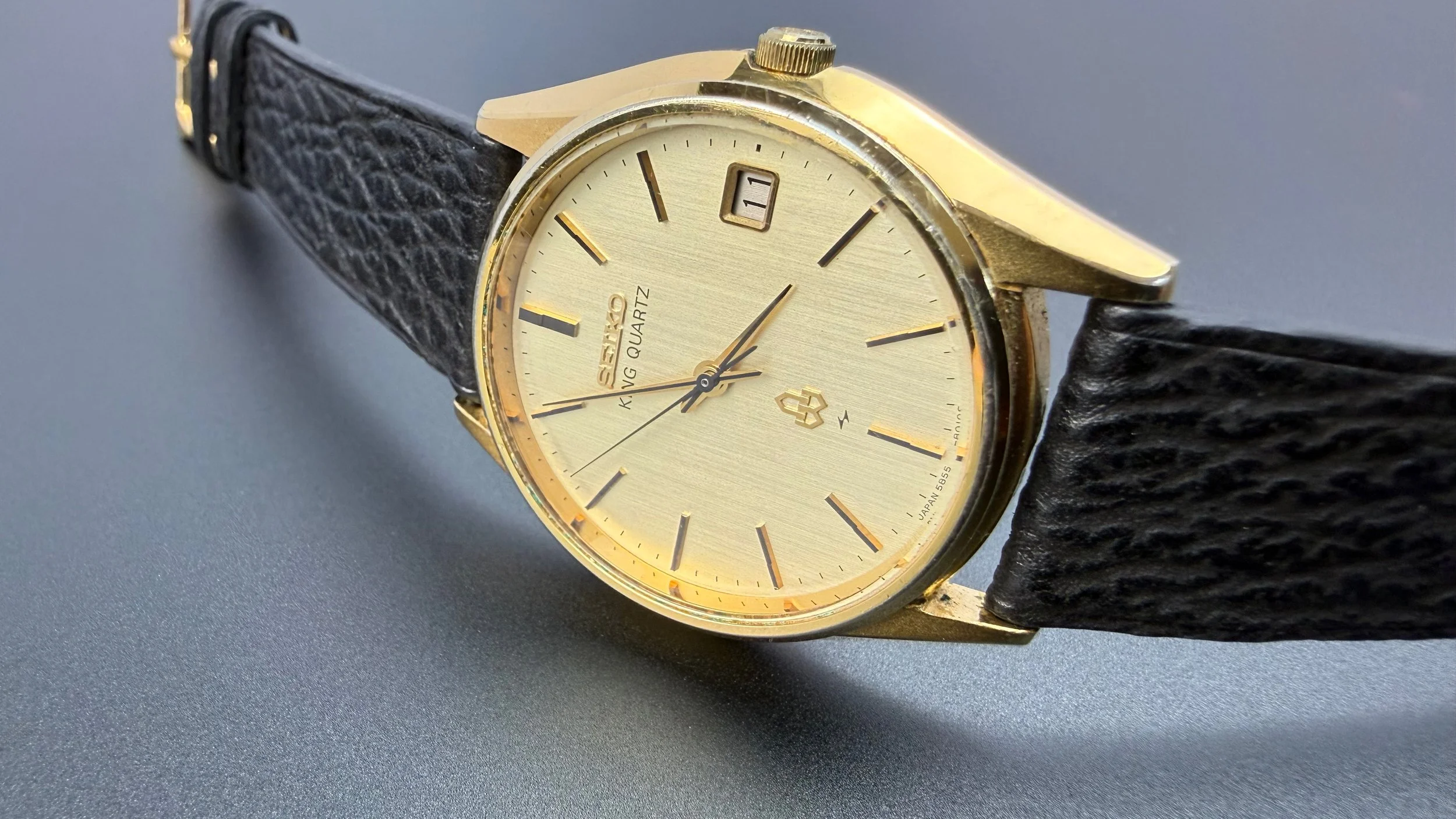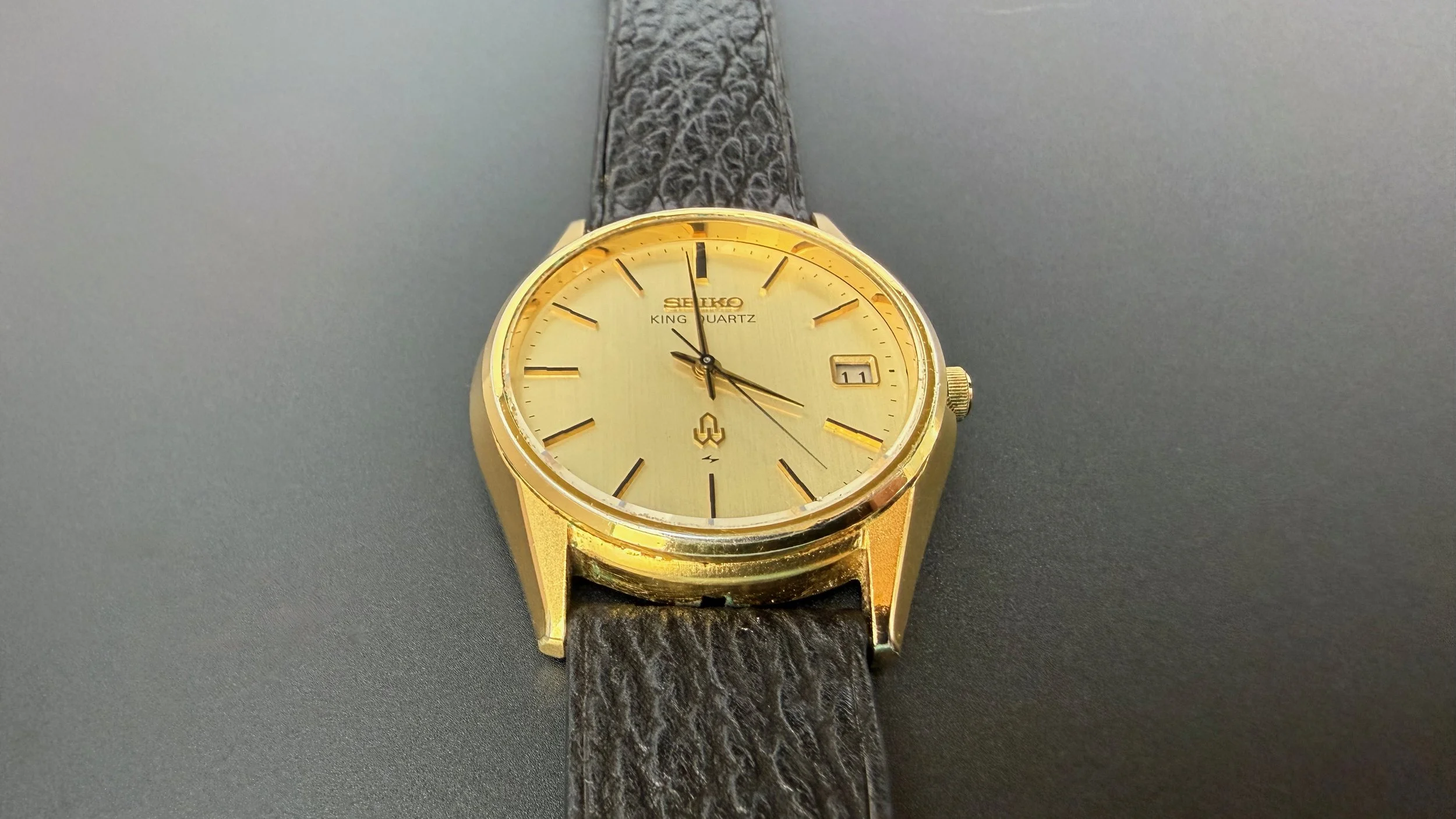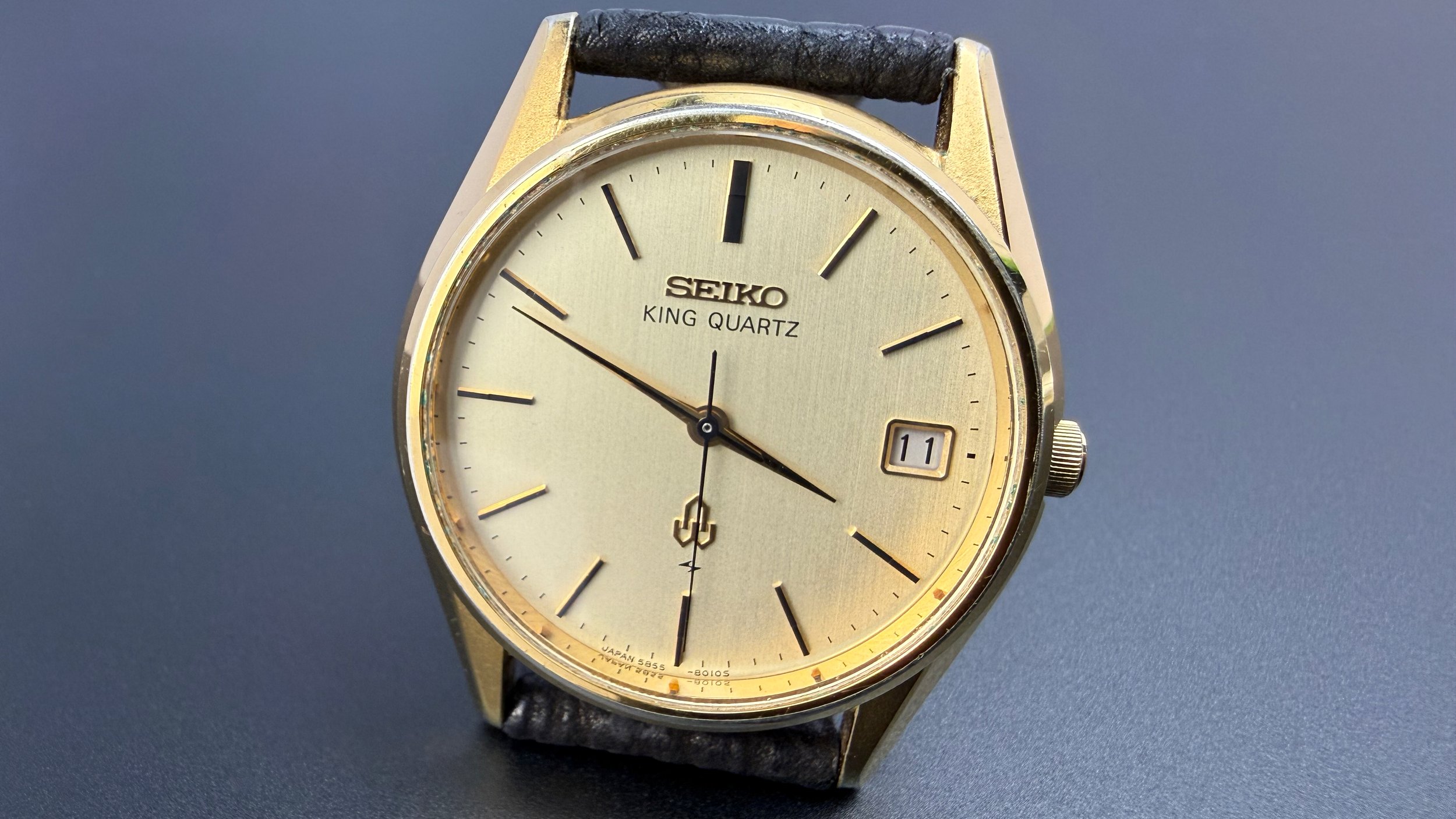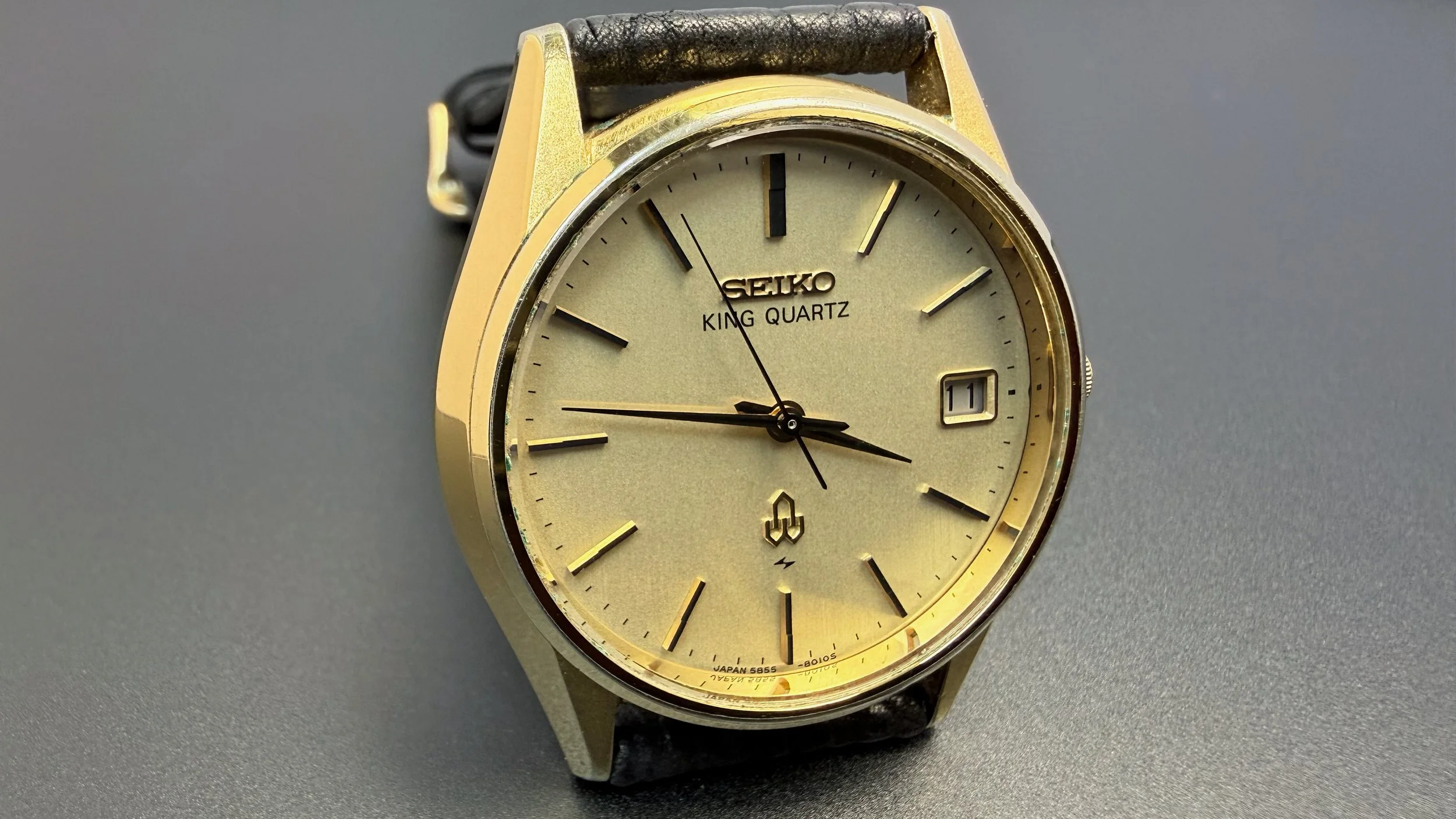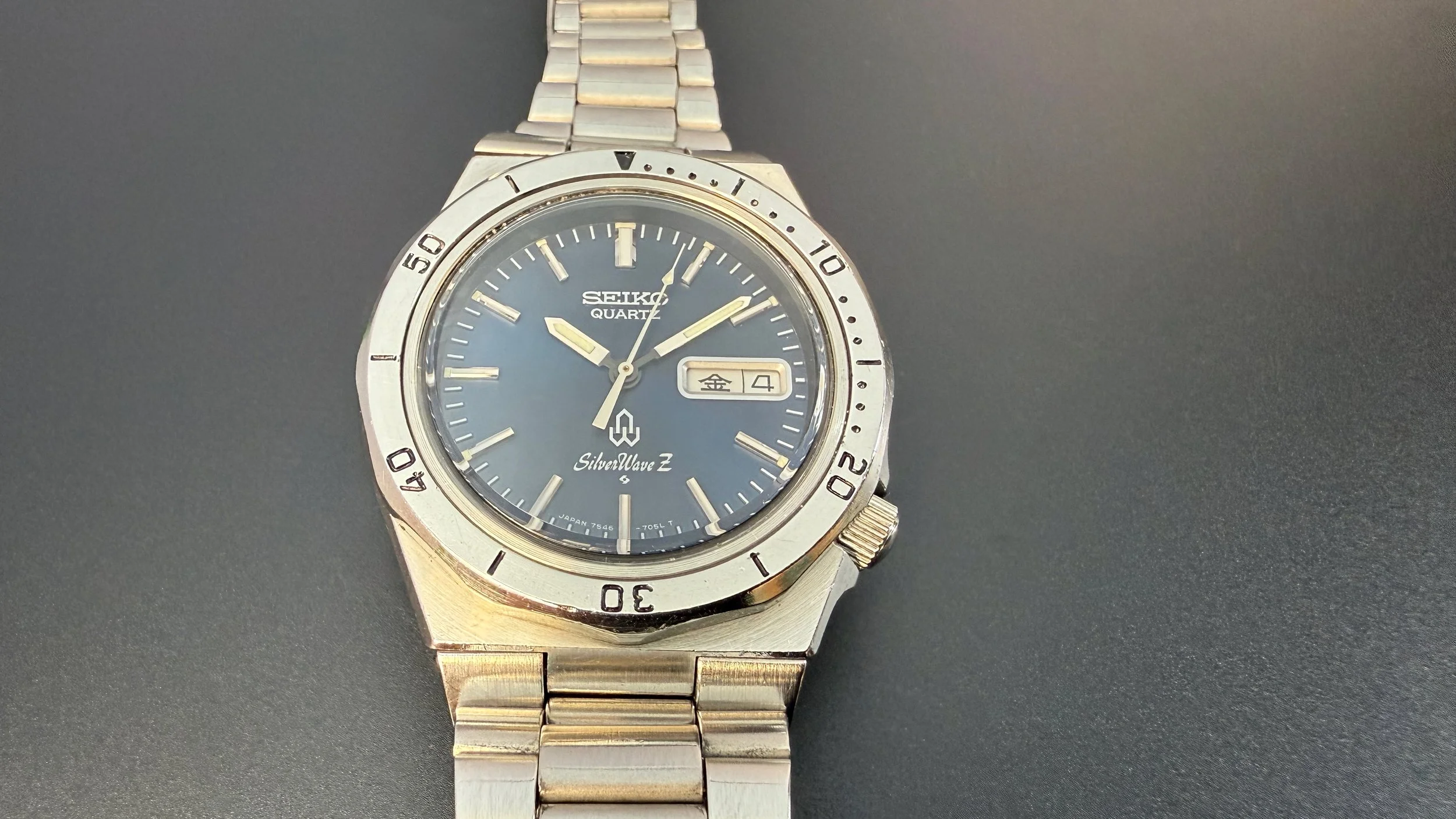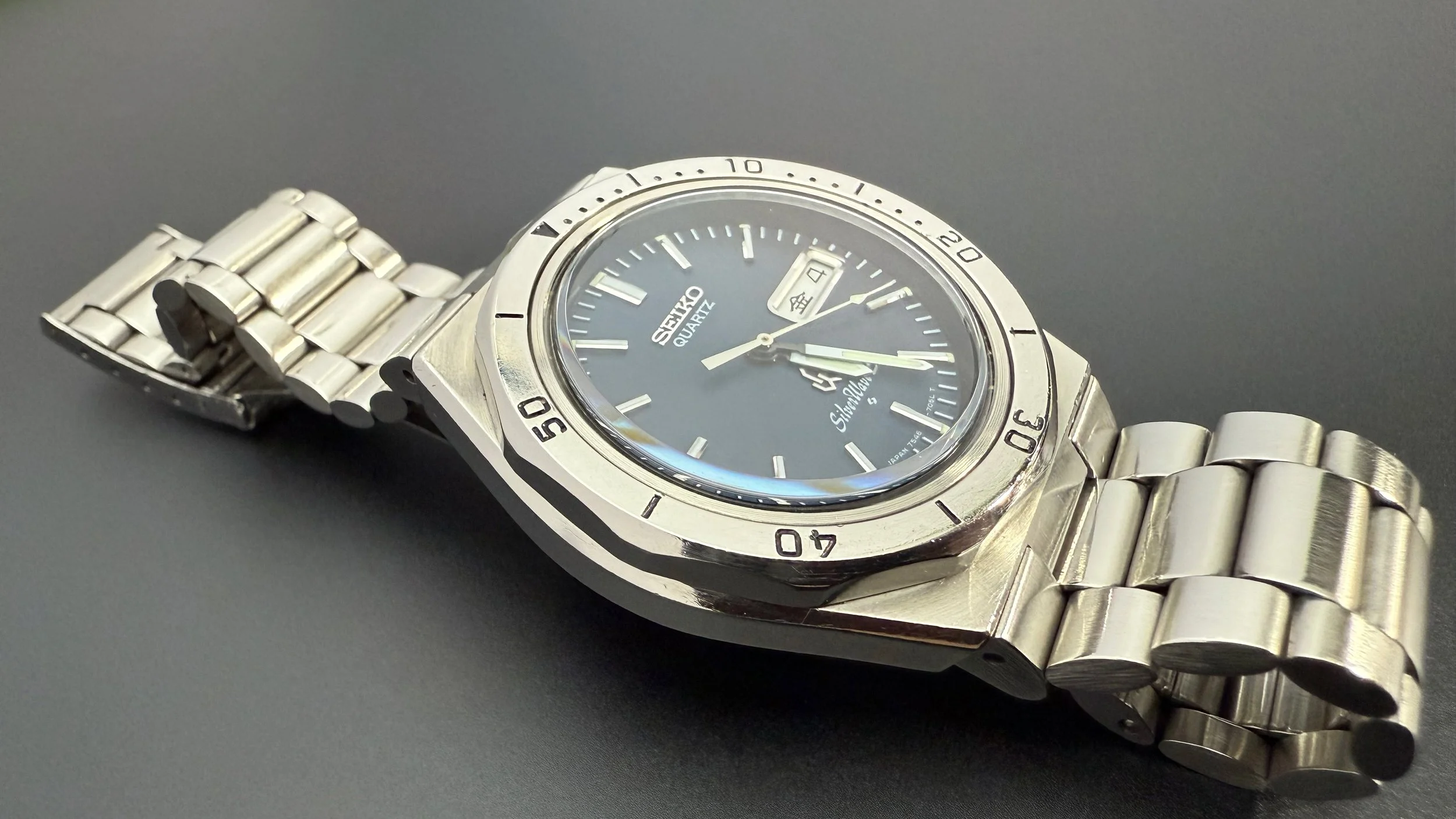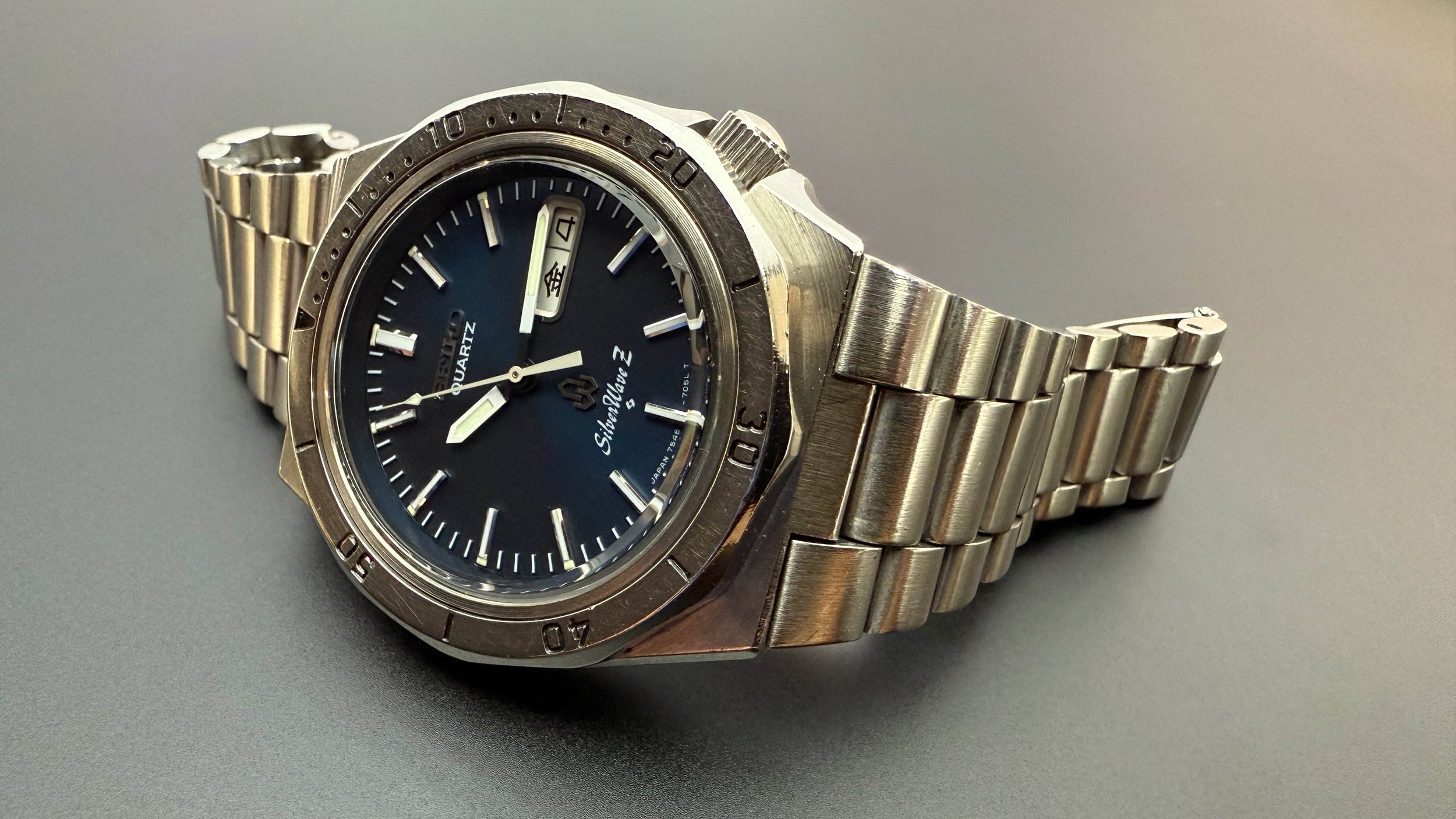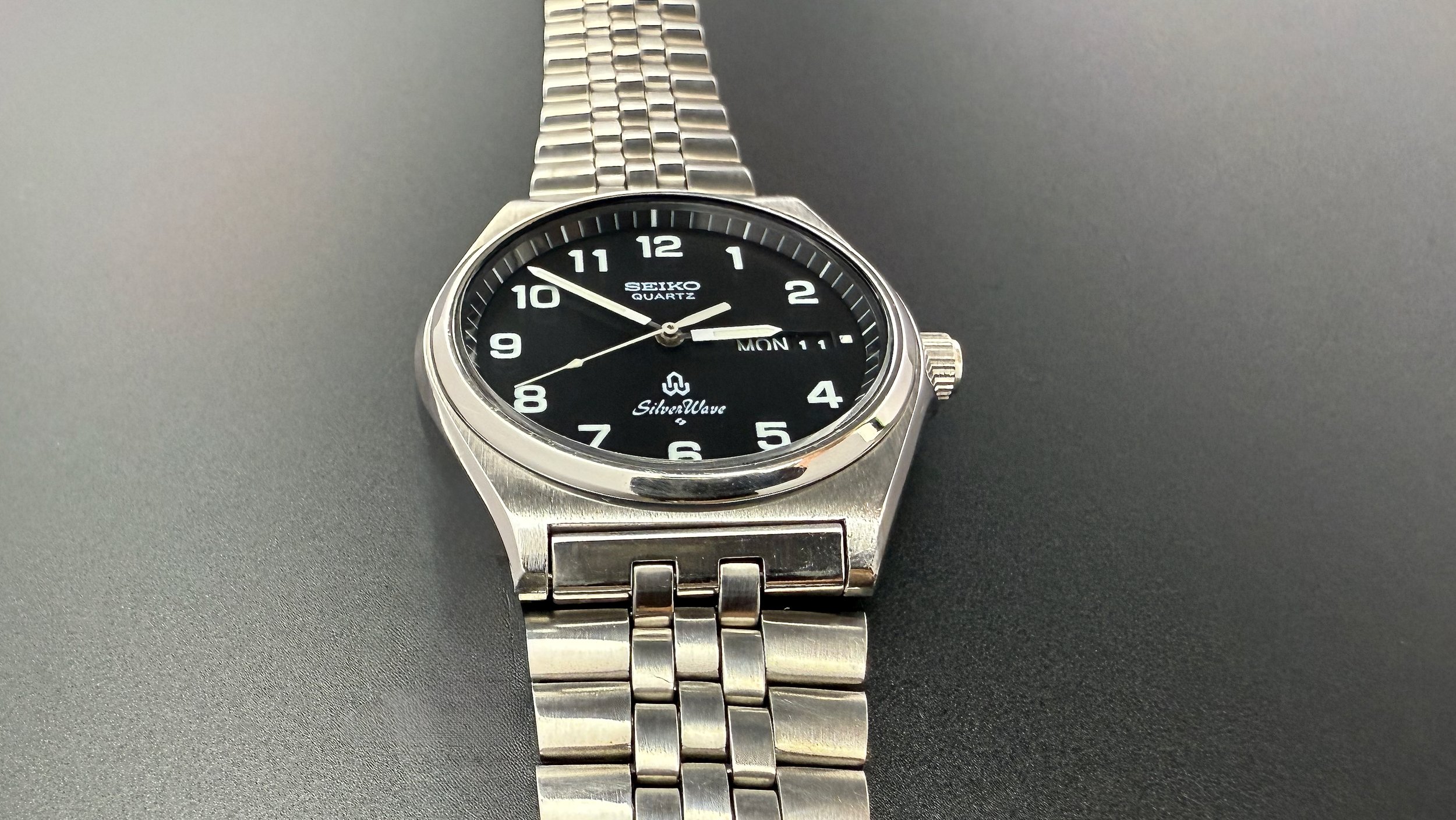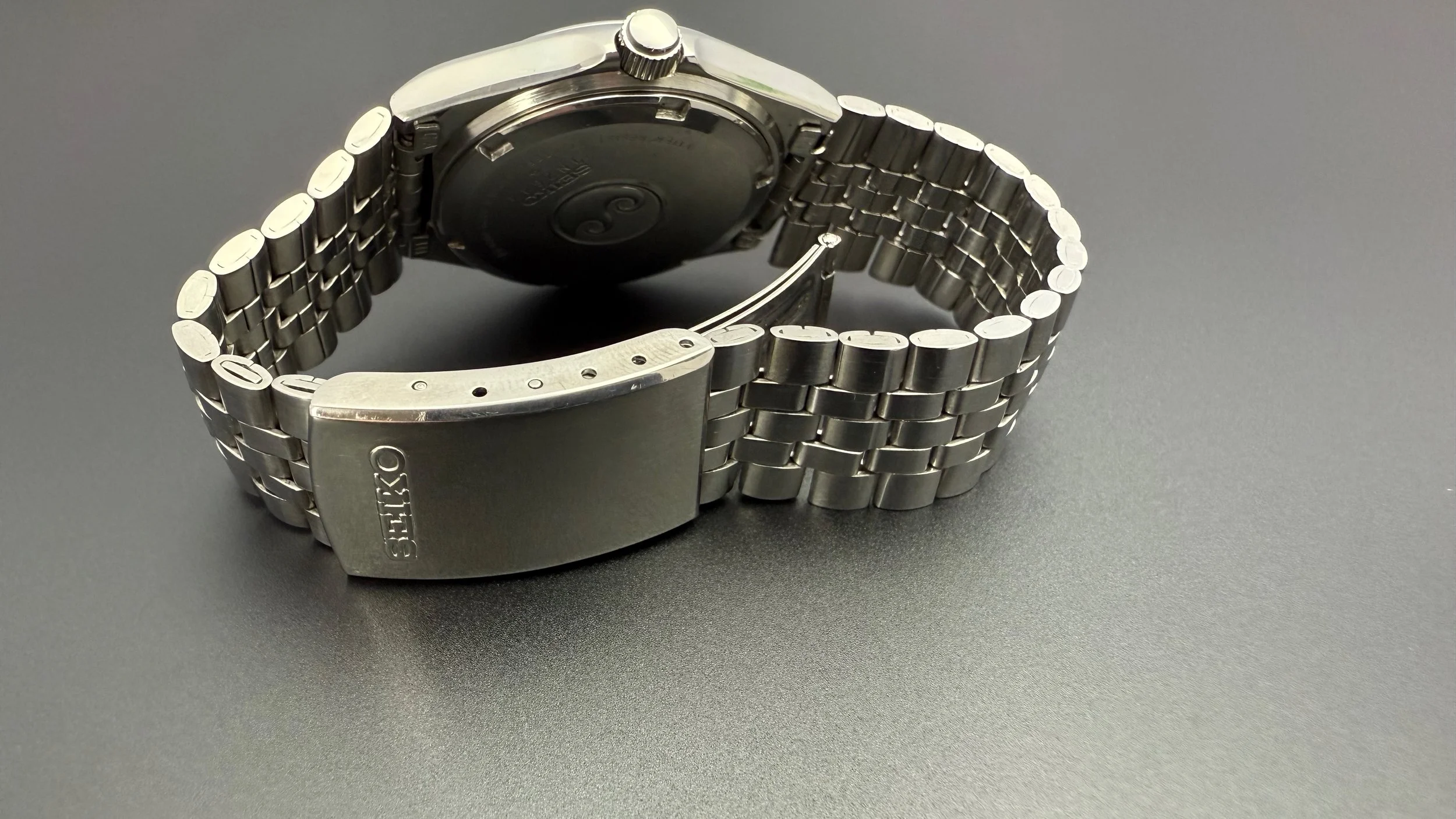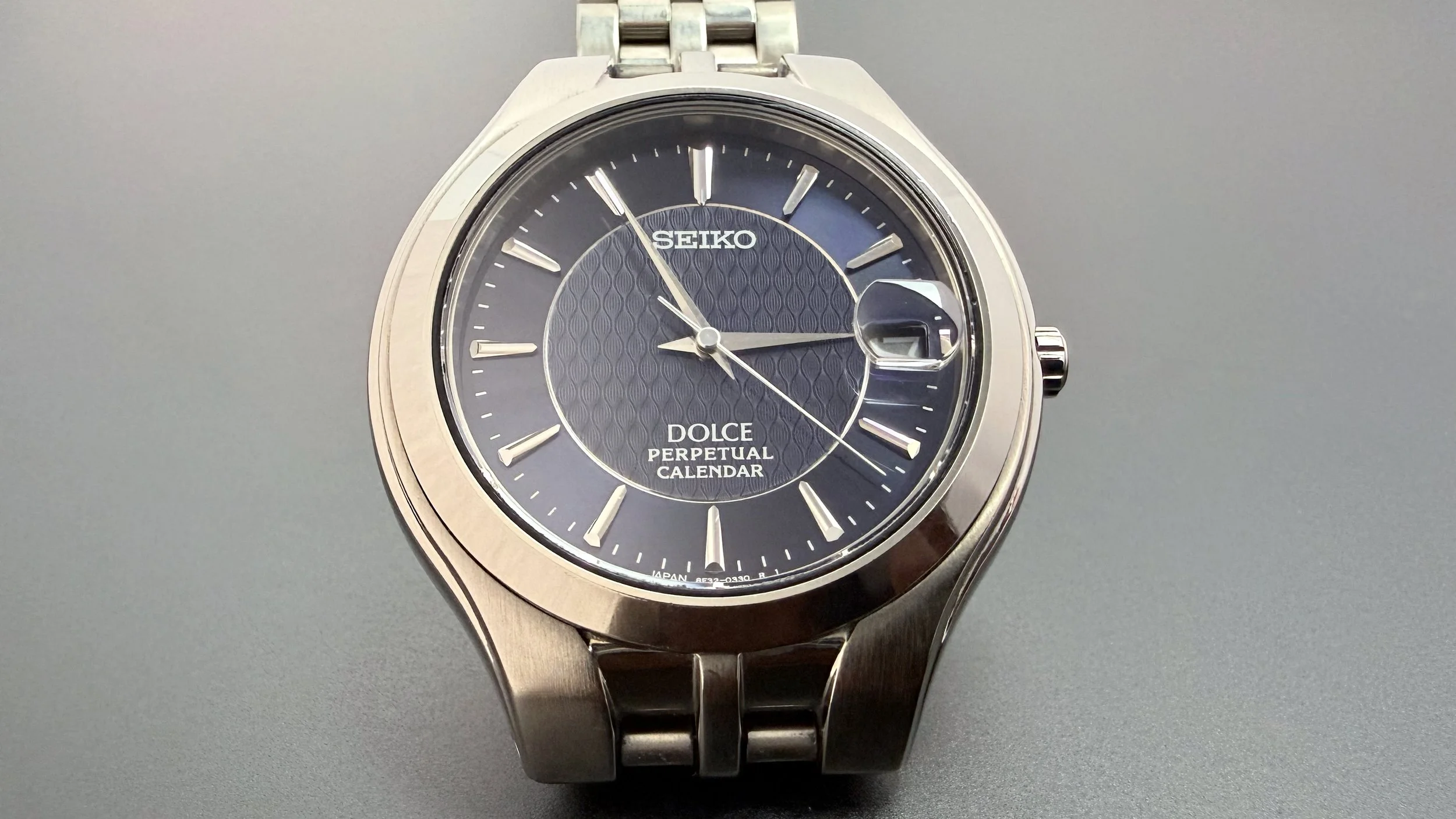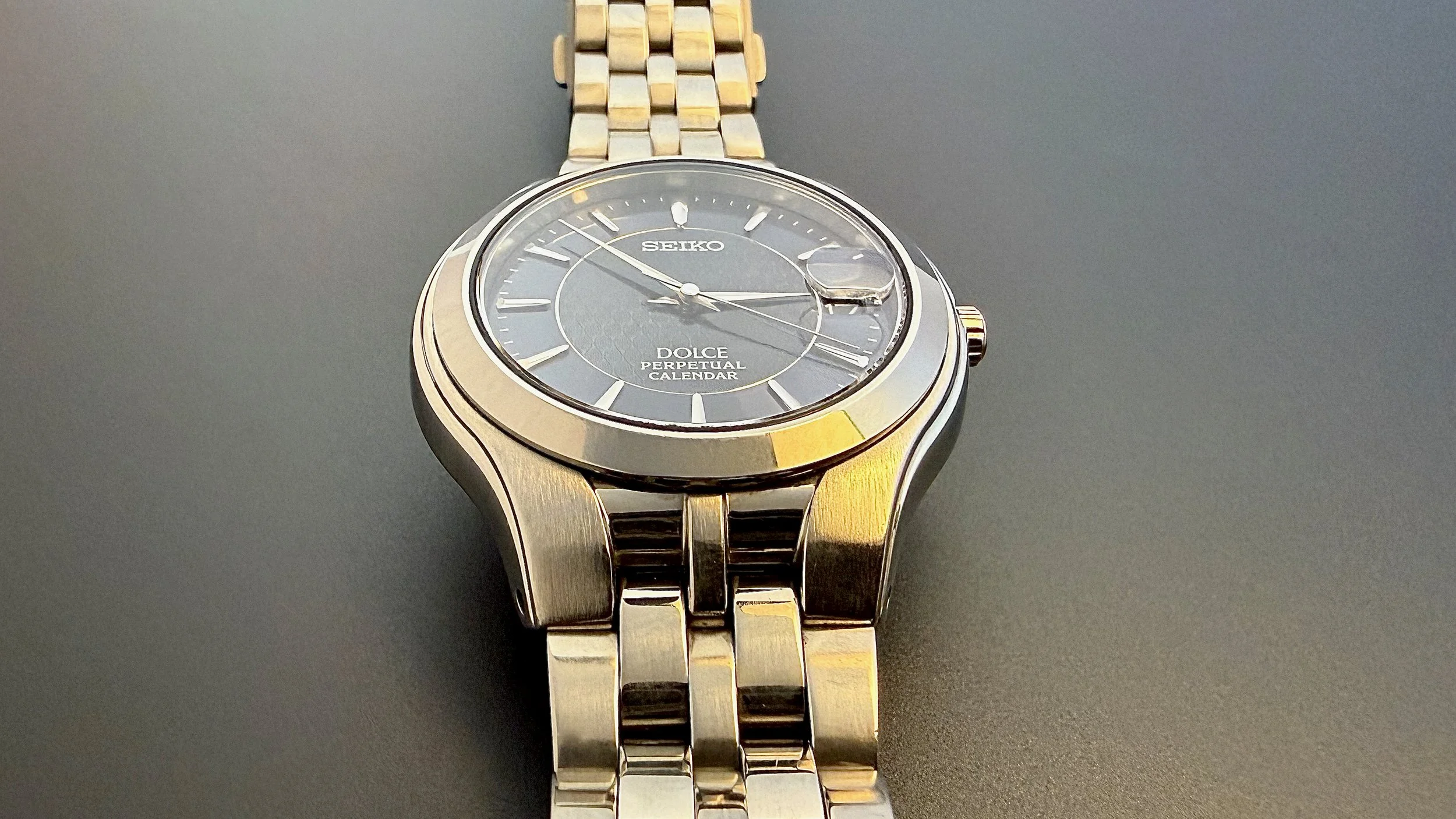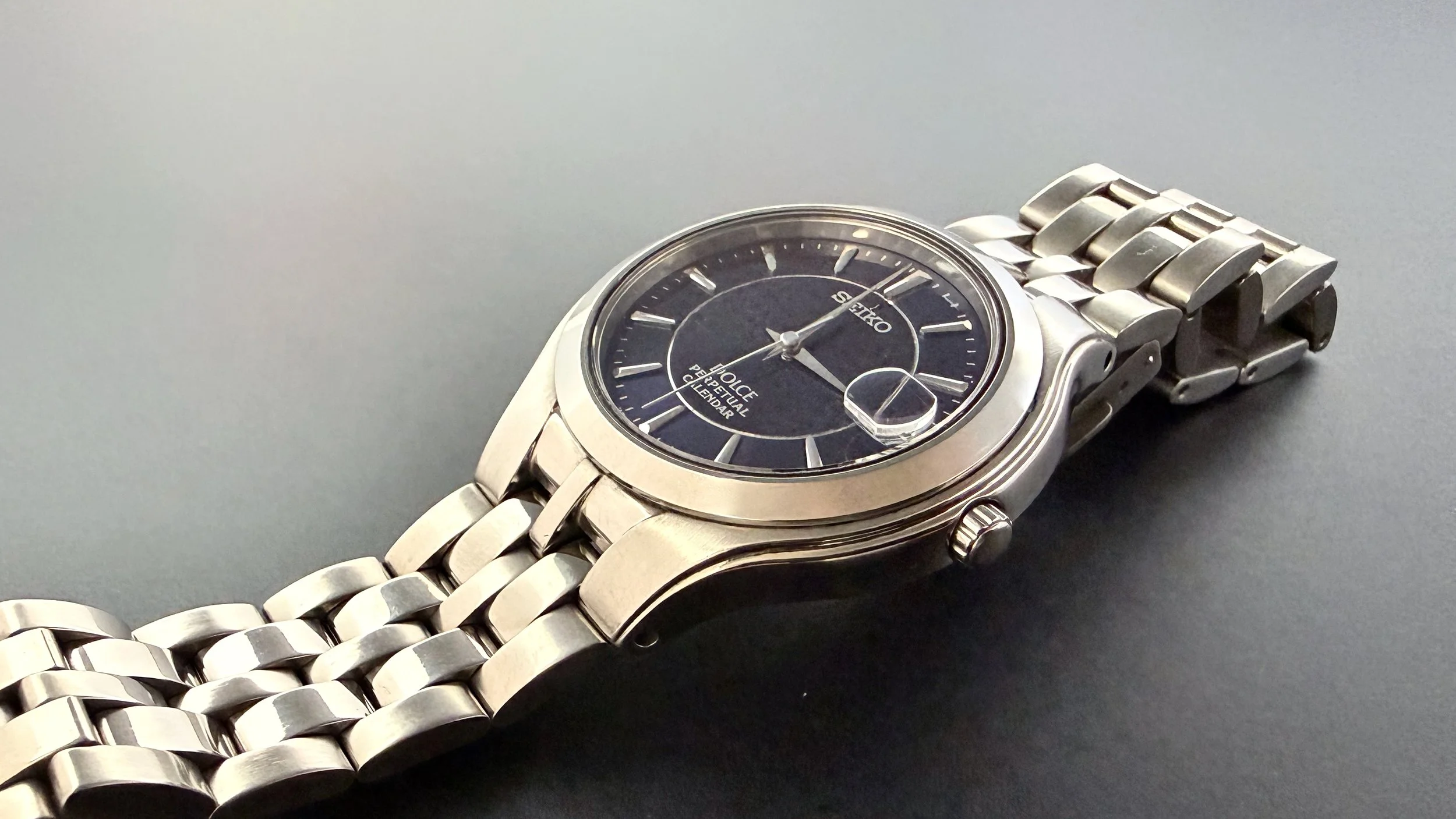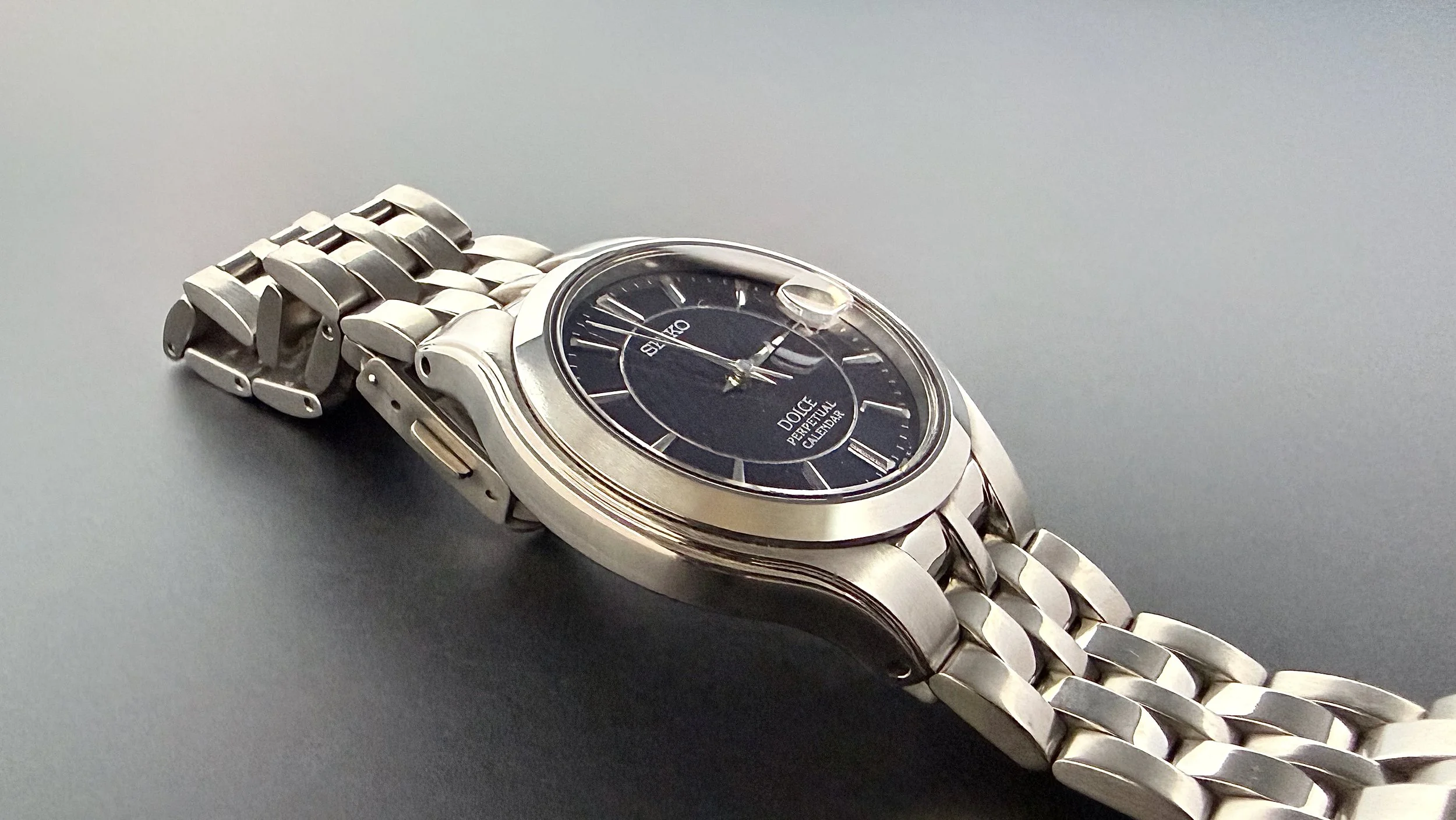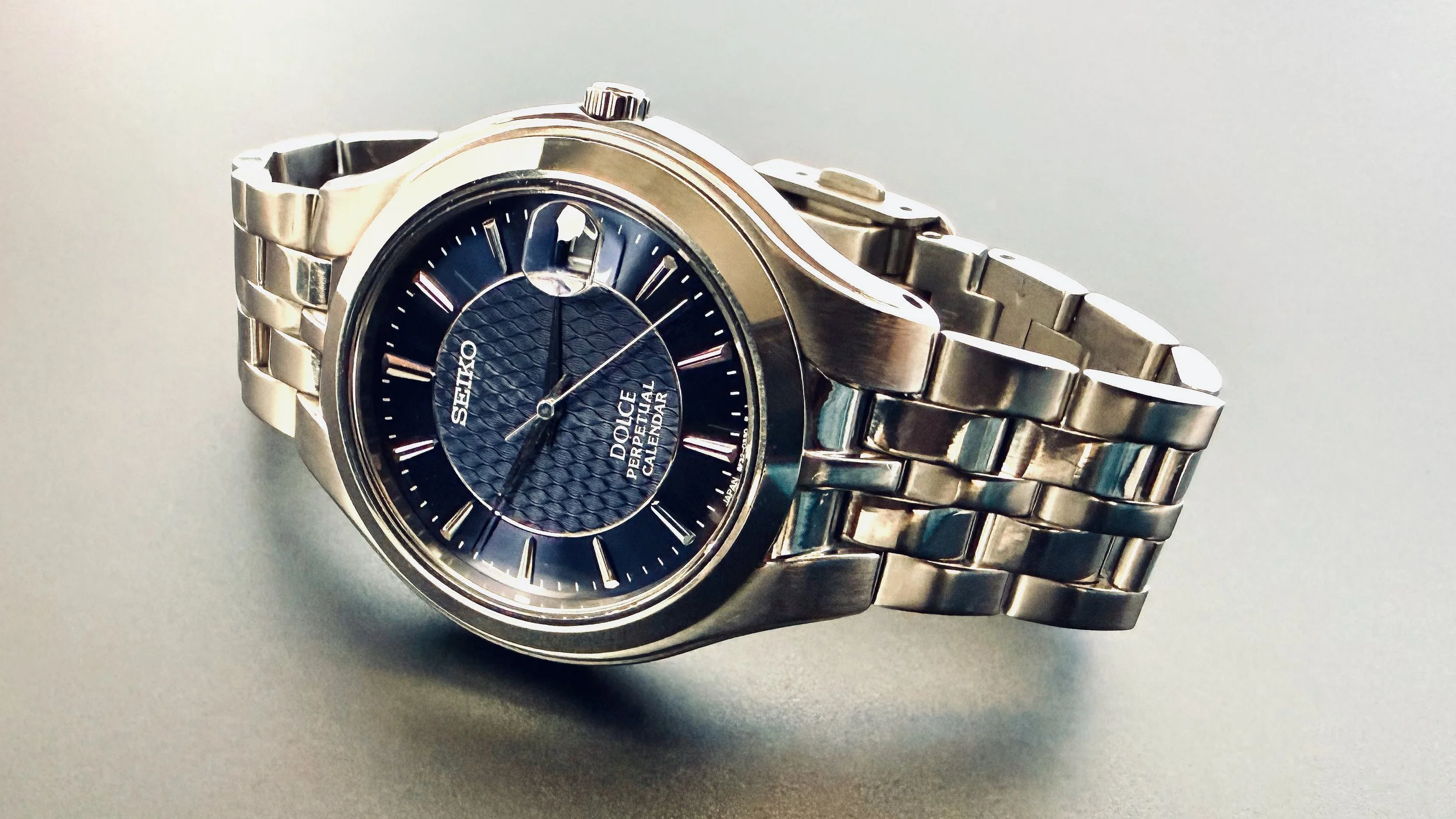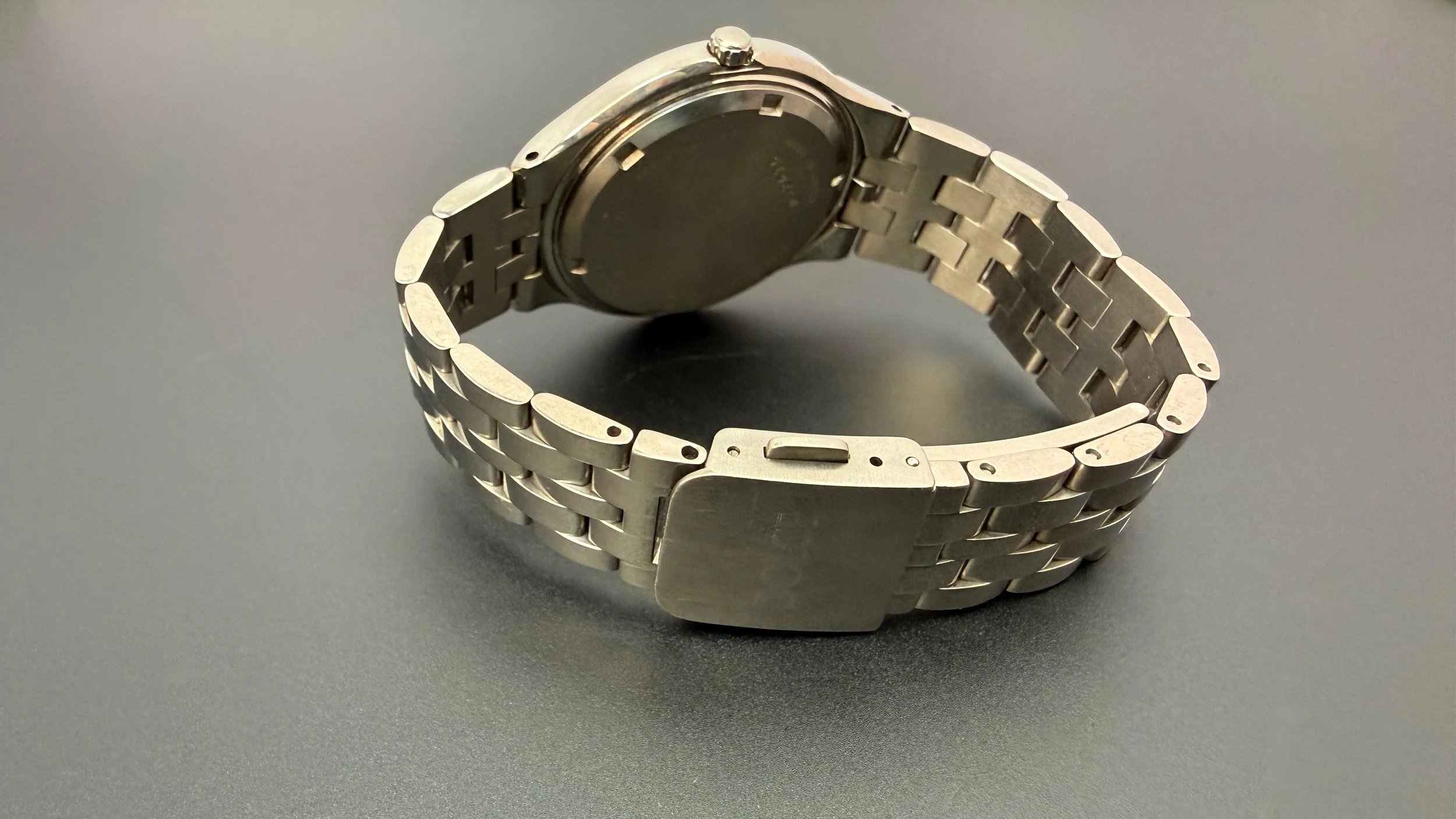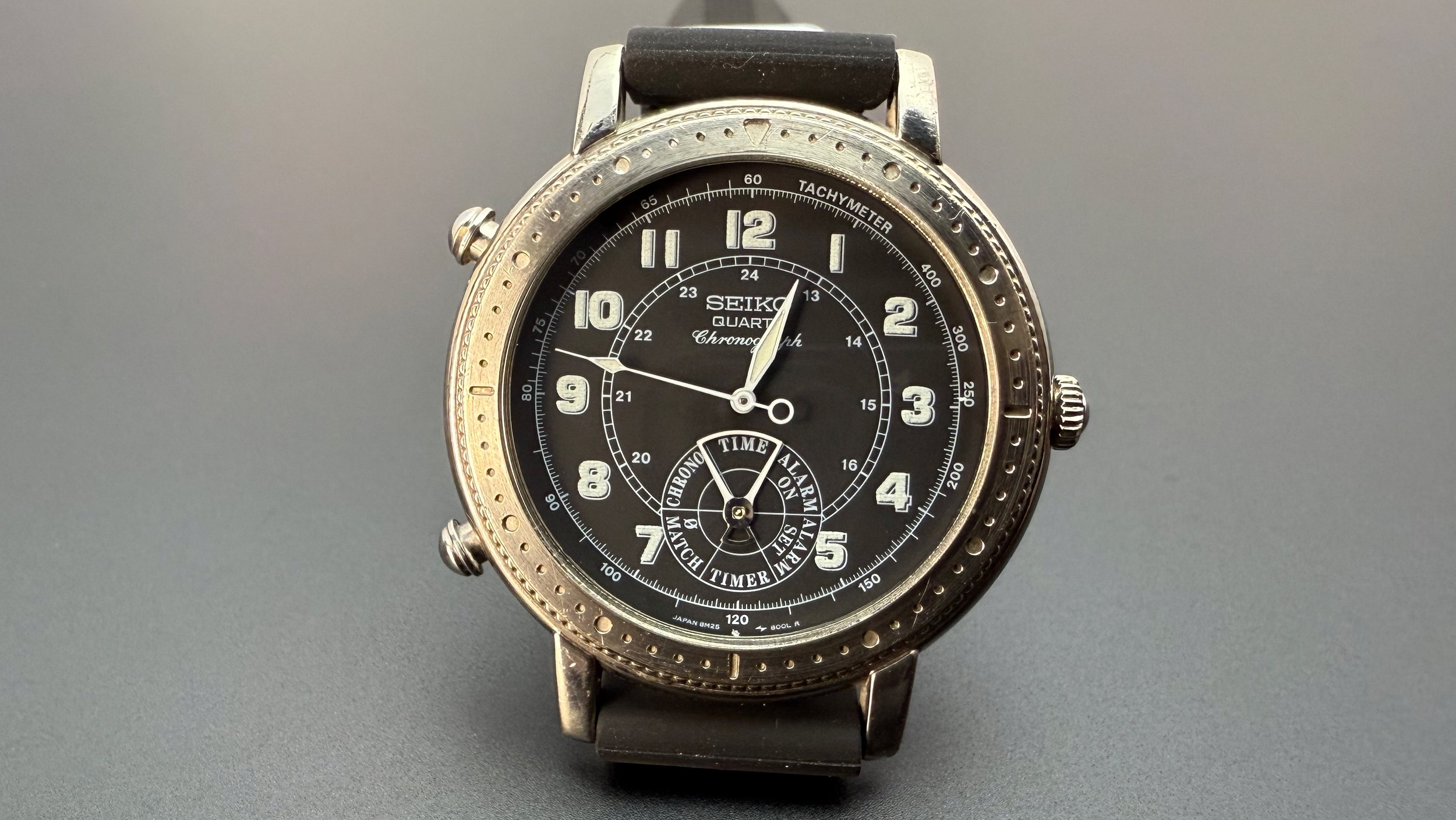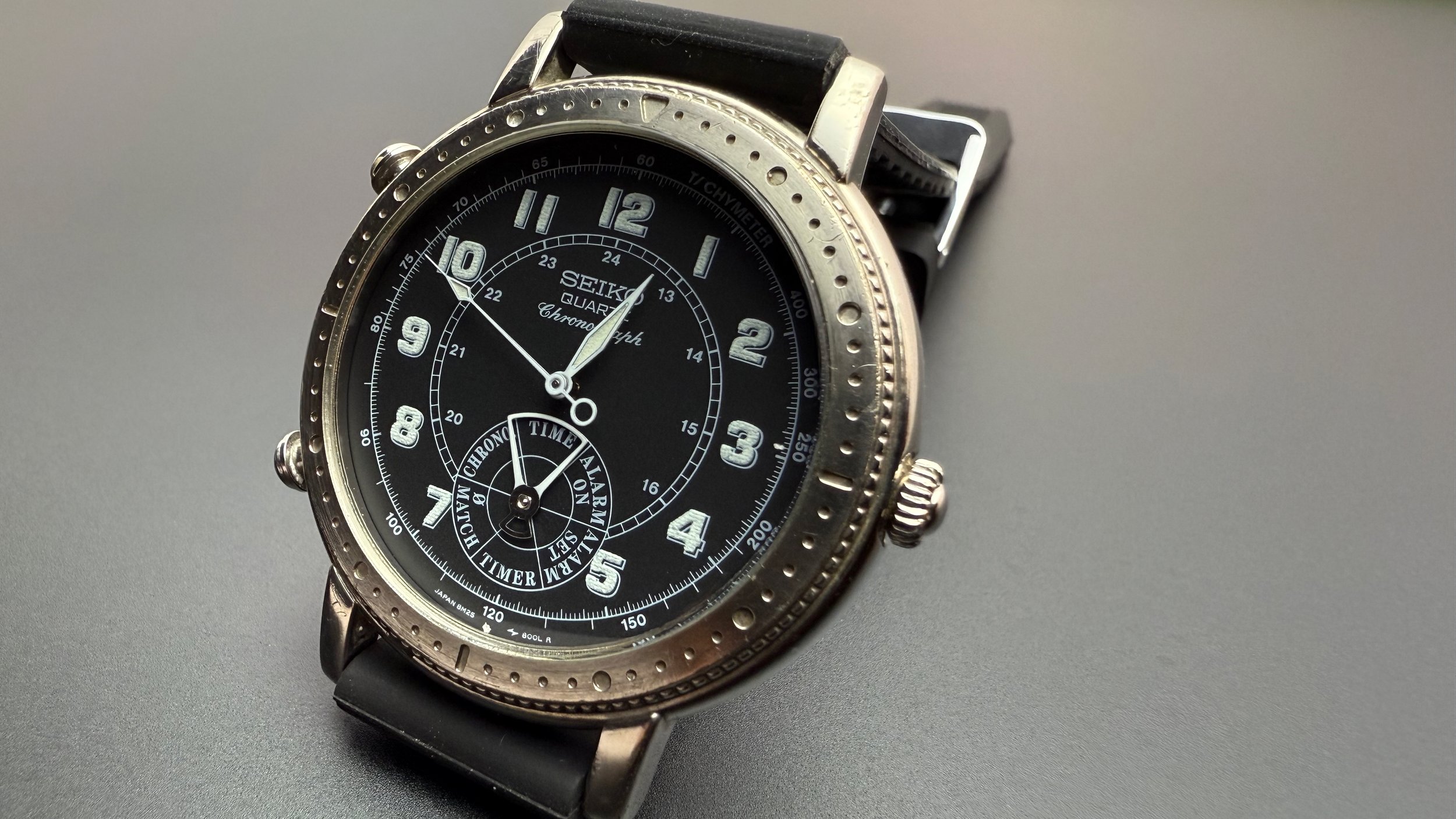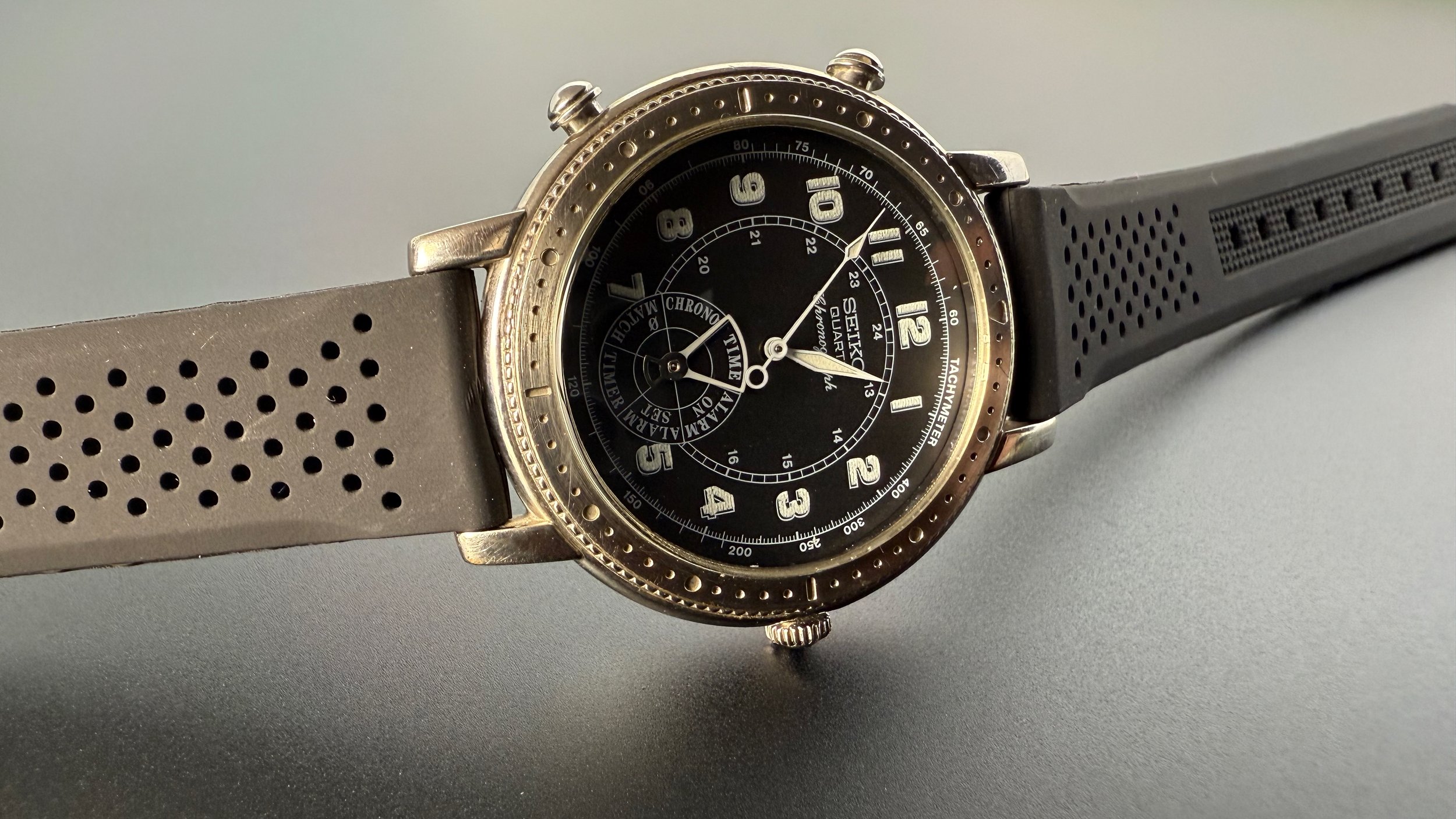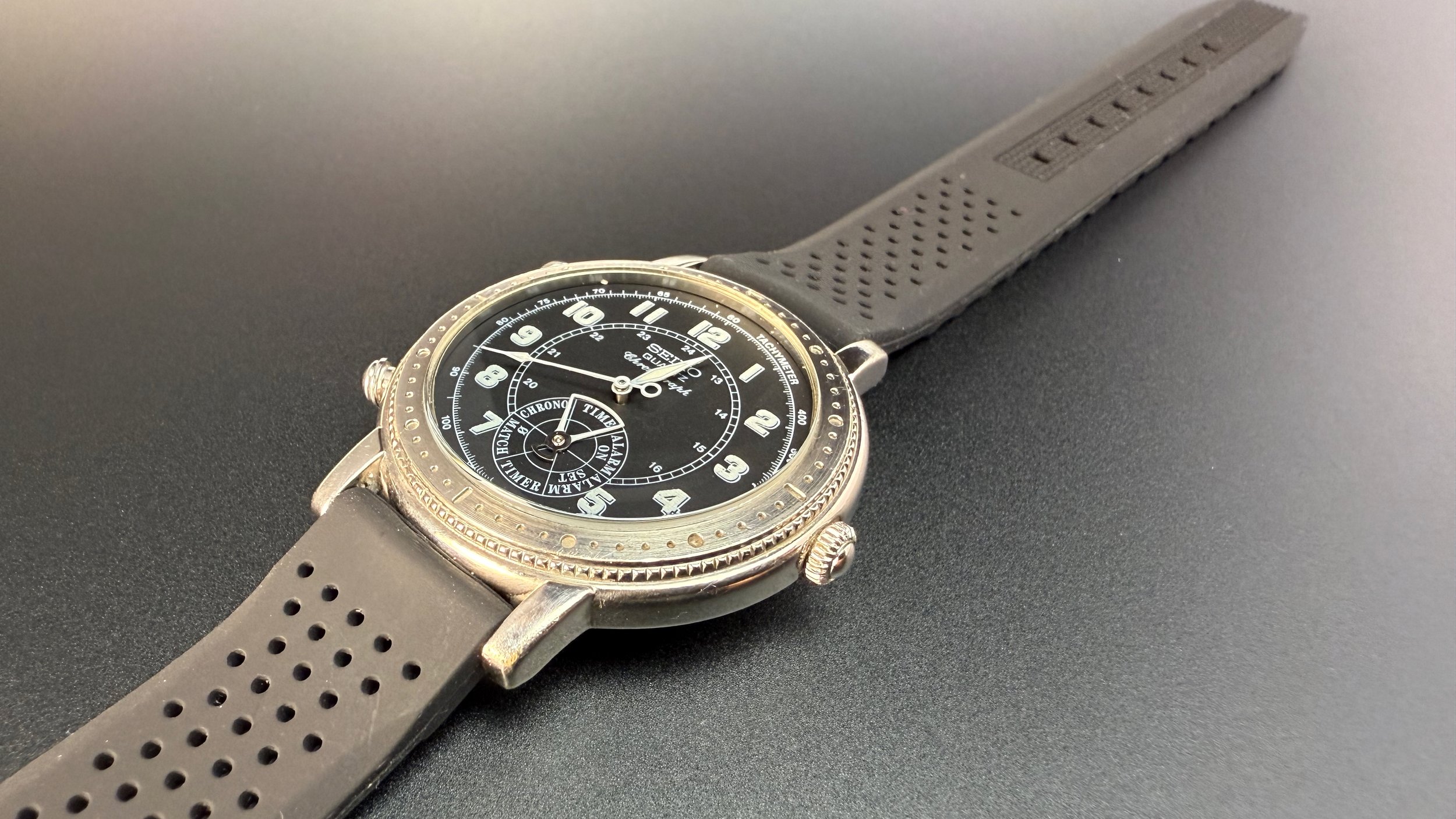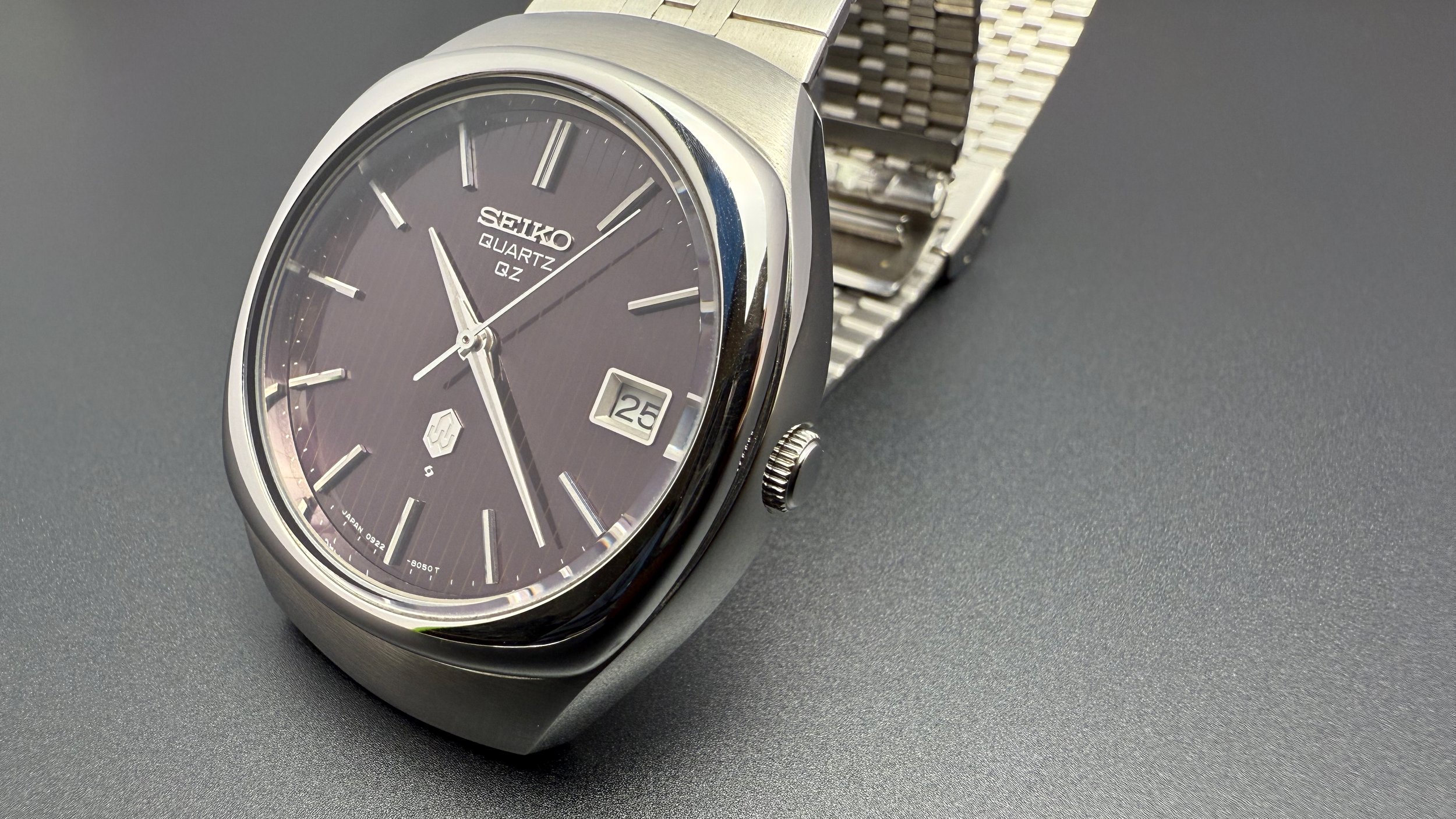In 1977, as Seiko continued to refine its quartz technology beyond the experimental phase, the 5855-8010 was released under the King Quartz banner. This model represents a turning point in Seiko’s early quartz development—where engineering confidence met restrained luxury.
The case is gold-plated, not as an afterthought, but as an integrated part of the watch’s identity. It reflects Seiko’s ambition at the time: to produce quartz watches with a presence equal to their mechanical counterparts. The plating is original, untouched, and preserved without polishing, offering a clear look at the manufacturing standards of the period. Please not the specially finished “gold hammered” look of the lugs.
Inside is Seiko’s 5855 movement. It’s from the second generation of high-grade quartz calibers—built thicker and heavier than later models, with an emphasis on long-term reliability. This movement was adjusted at the factory to maintain monthly accuracy, and its thermo-compensated design allowed it to remain stable without relying on dual-oscillator configurations.
This example features its original dial, with sharp applied markers and clean text alignment, characteristic of Seiko’s higher-spec assembly lines in the late 1970s. The date at 3 o’clock changes crisply, and the hands track smoothly with no backlash. The crown remains tight, and the setting function operates without resistance.
Quartz watches from this era are often overlooked, but examples like the 5855-8010 show what was possible before cost reduction took hold. This is a precise, serviceable, and cleanly executed watch that delivers more substance than its slim successor lines. For collectors focused on build quality, original condition, and correct period execution, this model offers all three.
In 1977, as Seiko continued to refine its quartz technology beyond the experimental phase, the 5855-8010 was released under the King Quartz banner. This model represents a turning point in Seiko’s early quartz development—where engineering confidence met restrained luxury.
The case is gold-plated, not as an afterthought, but as an integrated part of the watch’s identity. It reflects Seiko’s ambition at the time: to produce quartz watches with a presence equal to their mechanical counterparts. The plating is original, untouched, and preserved without polishing, offering a clear look at the manufacturing standards of the period. Please not the specially finished “gold hammered” look of the lugs.
Inside is Seiko’s 5855 movement. It’s from the second generation of high-grade quartz calibers—built thicker and heavier than later models, with an emphasis on long-term reliability. This movement was adjusted at the factory to maintain monthly accuracy, and its thermo-compensated design allowed it to remain stable without relying on dual-oscillator configurations.
This example features its original dial, with sharp applied markers and clean text alignment, characteristic of Seiko’s higher-spec assembly lines in the late 1970s. The date at 3 o’clock changes crisply, and the hands track smoothly with no backlash. The crown remains tight, and the setting function operates without resistance.
Quartz watches from this era are often overlooked, but examples like the 5855-8010 show what was possible before cost reduction took hold. This is a precise, serviceable, and cleanly executed watch that delivers more substance than its slim successor lines. For collectors focused on build quality, original condition, and correct period execution, this model offers all three.


